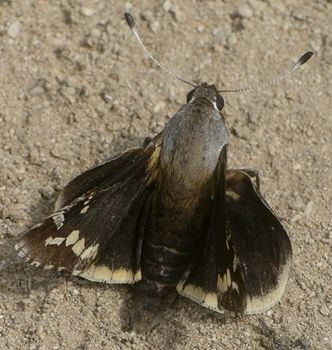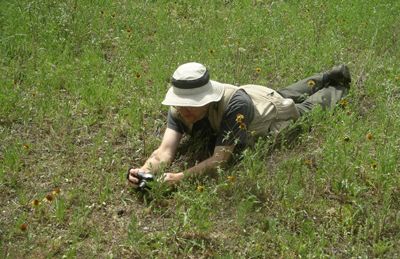
Xami Hairstreak
 Xami Hairstreak |
I've always enjoyed searching for things, usually those with little desirability to most people. Ordinary fossils, pretty stones, feathers, seashells, weird insects, and bones come to mind. For a number of years now, I've enjoyed photography, so the search is now obvious: discovering new and intriguing things to take pictures of.
Nature provides such an array of creatures and phenomena that I doubt I'll ever run out of novel sightings that delight and fascinate me. There is always some new flower or fungus that I see for the first time, an unfamiliar insect that I cannot immediately identify, or some odd behavior that is simply amazing. It's like Christmas morning gift opening to a 6-year-old.
When I am photographing insects, I expect to regularly find beetles, wasps, and flies that are completely new to me. There are many kinds and most are very small so the chances of encountering any but the most common species are quite low. On the other hand, some types of insects are big and obvious. There is a reason that butterflies are the single most popular invertebrate subject among nature enthusiasts. Bird watchers that grow tired of getting up early and braving cold, wet weather often turn their binoculars on the lovely colors of these fluttering "flying flowers" that are not active until it is warm and sunny outside.
 Yucca Giant-Skipper |
After years of spending a lot of time outside here in central Texas, I've managed to photograph a large percentage of the butterflies that are commonly seen. I've even bagged a few that are uncommon or rare. I hardly ever expect to encounter something new, but one recent find was a small, pale green hairstreak that I had never seen before. Once I studied the photographs and researched it (happily, butterflies are so well documented that guide books contain all the species known in the U.S.), I learned that I'd seen a Xami Hairstreak. I'd never even heard of that one, and it is not at all common in the Austin area.
I happened to find that butterfly in a friend's yard. For the past few years, I've been making weekly trips to Winnie's yard in Manchaca. Winnie is a charming conversationalist and maintains the best native plant gardens around. I was able to show her the tiny butterfly and we stood together, watching it flit about while we discussed our guesses at what it might be. For the same reason that giving is better than receiving, sharing a special discovery with a friend makes it all that more pleasurable.
As much as I like the solitary pursuit of nature photos, I relish the times that I can go out in the field with friends. I've assisted a botanist with locating new plant species to add to a property list, participated in a fish sampling expedition, and regularly take small groups out to look for insects. The annual butterfly counts with the Austin Butterfly Forum are a highlight of my year. Just being out in the field with other people guarantees that we will see, and learn, more. There are a few members of the Butterfly Forum who are so knowledgeable about caterpillar host plants and finding the hidden larvae that I can almost always count on seeing something completely new to me. Even more participants are expert on identifying butterflies at a glance, including rare species that are easily overlooked if one is not aware of them.
 An expert in action. |
This past spring, I was lucky enough to be invited on a guided safari to see an unusual and uncommon butterfly. Our host was Dan, and he took our small group down a steep cliff side through some winding trails to an open field where he had recently seen the Yucca Giant-skipper, on the way pointing out the large pink eggs of our quarry. Within minutes of arriving, we saw the unmistakable large, fast butterflies zooming around. A couple of times, one landed near enough for photos, and we even got some close-ups.
Seeing this insect in detail was quite a treat. It is a robust and heavy butterfly, with the sleek look of a sphinx moth. I'd never seen anything quite like it. But besides the wonder of finding our "treasure" on this hunt, the camaraderie of fellow enthusiasts made the experience all the more fun. Hearing the delighted exclamations, having more eyes to follow our subject and help each other see it, and sharing insights made the experience that much more exhilarating. The best bit, though, had to be when Dan demonstrated his inimitable technique for approaching the Yucca Giant-skipper. The rest of us forgot all about taking our own pictures, as we watched him creep slowly towards his subject, holding our breath in empathetic anticipation as he got within inches of the beast!
Finding and photographing a rare species is always exciting, but going out in the field with friends to make the same kind of discovery is simply priceless!